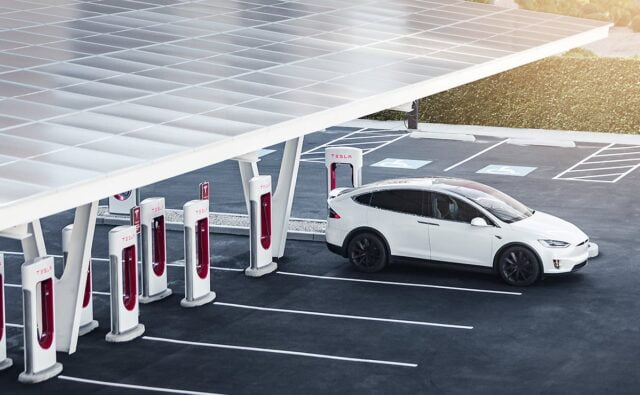
In a move set to revolutionize the electric vehicle (EV) charging landscape, Tesla has begun opening its extensive Supercharger network to non-Tesla EVs. This groundbreaking initiative not only provides a much-needed boost to EV charging infrastructure but also signals a potential shift in the industry towards greater collaboration and interoperability.
The Driving Force: A Need for Speed and Accessibility
The lack of widespread and reliable fast-charging infrastructure has long been cited as a major obstacle to EV adoption. Tesla’s Supercharger network, with its strategically located stations and high-power charging capabilities, offers a solution to this challenge. By opening the network to other EV brands, Tesla is helping to alleviate “range anxiety” and make long-distance EV travel more feasible.
Breaking Down the Barriers: Adapters and Software Integration
For non-Tesla EVs to access the Supercharger network, they need to be equipped with a Combined Charging System (CCS) connector and use a CCS to Tesla adapter. Furthermore, drivers need to use the Tesla app to initiate and pay for charging sessions. This integration ensures a seamless charging experience for all EV users.
The Expanding Roster: EV Brands with Supercharger Access
- Ford: In a landmark deal, Ford became the first major automaker to gain access to the Supercharger network. Ford EVs equipped with the CCS connector can now utilize Superchargers using an adapter.
- General Motors: Following suit, General Motors also announced a partnership with Tesla, granting its EVs access to the Supercharger network.
- Rivian: The electric truck and SUV manufacturer has also joined the growing list of EV brands with Supercharger access.
- Other Brands: Several other automakers, including Mercedes-Benz, Polestar, and Volvo, have expressed interest in joining the program.
The Tesla Advantage: A Strategic Move
Opening the Supercharger network to other EV brands is a strategic move for Tesla. While it may seem counterintuitive to share its proprietary charging infrastructure with competitors, the benefits for Tesla are significant.
- Increased Revenue: By charging non-Tesla EV owners for Supercharger access, Tesla can generate additional revenue and further monetize its existing infrastructure.
- Network Expansion: The increased demand from non-Tesla EVs could incentivize Tesla to accelerate the expansion of its Supercharger network, benefiting all EV users.
- Industry Leadership: This move positions Tesla as a leader in the EV charging space, potentially attracting more customers to its own vehicles and solidifying its position in the growing EV market.
The Ripple Effect: Benefits for the EV Industry
The opening of the Supercharger network is expected to have a positive impact on the entire EV industry.
- Accelerated EV Adoption: By addressing the charging infrastructure challenge, more consumers may be encouraged to switch to electric vehicles.
- Increased Competition: The increased availability of fast-charging options could spur greater competition among EV manufacturers, leading to improved products and lower prices.
- Collaboration and Standardization: This initiative could pave the way for greater collaboration and standardization in the EV charging industry, ultimately benefiting all stakeholders.
The Road Ahead: Challenges and Opportunities
While the opening of the Supercharger network is a major step forward, challenges remain.
- Network Congestion: As more non-Tesla EVs gain access to Superchargers, there is a risk of increased congestion and longer wait times, particularly in high-traffic areas. Tesla will need to continue expanding its network to keep up with demand.
- Pricing and Fairness: Ensuring fair and transparent pricing for non-Tesla EV owners will be crucial to the success of the program.
- Technical Compatibility: As new EV models and charging technologies emerge, ensuring compatibility with the Supercharger network will be an ongoing challenge.
Despite these challenges, the opening of the Supercharger network represents a significant opportunity for the EV industry. By working together to build a robust and accessible charging infrastructure, automakers and charging providers can accelerate the transition to a sustainable transportation future.
The opening of the Tesla Supercharger network to non-Tesla EVs is a landmark event in the evolution of the electric vehicle industry. It marks a shift towards greater collaboration and interoperability, addressing a critical barrier to EV adoption. While challenges remain, this initiative has the potential to accelerate the transition to a cleaner and more sustainable transportation future.










